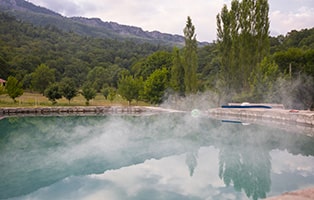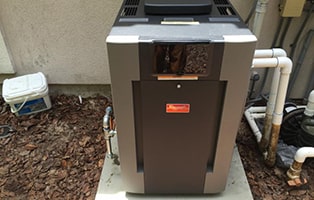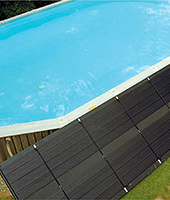 In the market for a Pool Solar Heater? Check out our 2023 Guide to the Best ones including Ratings!
In the market for a Pool Solar Heater? Check out our 2023 Guide to the Best ones including Ratings!
Thinking of investing in a solar pool heater? A backyard pool can be a terrific way to splash away your cares after a long, hard day at the office. However, if your pool is too frigid, diving into it can be a decidedly unpleasant experience instead of a delightful one.
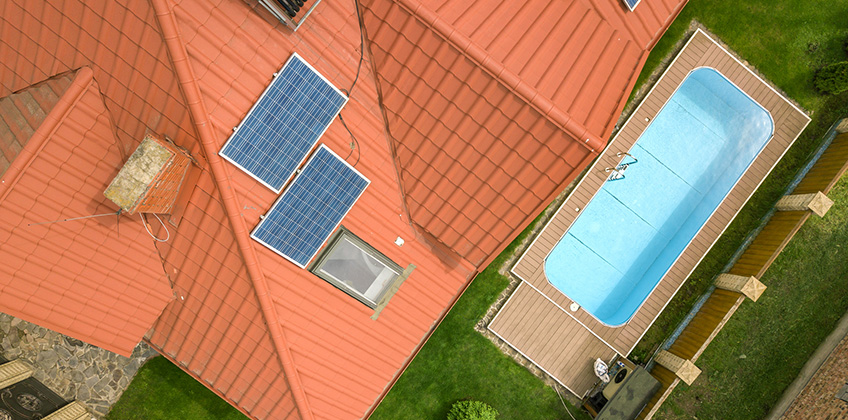
That’s where pool solar heaters enter the picture. These units require no electricity, are relatively easy to set up, and have exceptional efficiency. You can get solar heaters for above-ground pools and solar heaters for in-ground pools. You can even get floating solar pool heaters.
You can extend swim season by several months by running a solar heater for your pool. That way, you’ll be able to take a refreshing dip as the spring buds start to appear on the trees. You can also go for a relaxing swim in the autumn when the foliage explodes in bursts of orange and yellow.
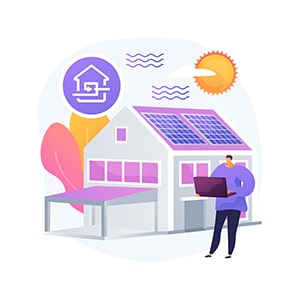
Moreover, the cost of operating one is significantly less than any other type of pool heater. Solar pool heaters harness the sun’s free energy to get pool water nice and toasty, so you only pay what it costs to run a pool pump, typically $75 a year.
Because pool warmers cost hardly anything to run, you’ll likely recoup your initial investment within three years. They don’t spew planet-destroying greenhouse gases into the atmosphere, making them the most environmentally friendly pool heater choice.
Because these types of heaters are in such demand, they can even boost your home’s value. And with no moving parts, maintenance needs are minimal.
If you don’t have much space in your yard for a solar pool heater, don’t worry. That’s because you can mount panels on top of your house.
How They Work
The sun’s rays are constantly beating down on your backyard swimming oasis, which causes pool water to naturally heat up a tiny bit. Solar pool heaters amplify this natural effect a hundredfold.
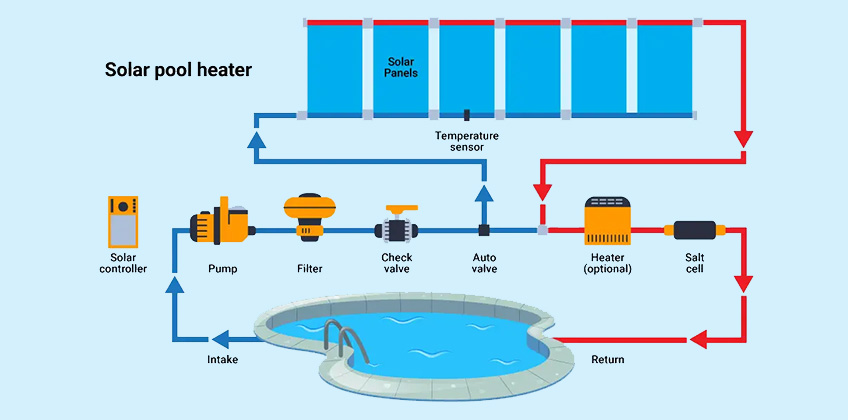
They do this by pushing pool water through tubes fastened to the back of collectors. As the water rises in the pipes, the sun’s energy collected by the panels makes the water warmer. The unit returns the water to the pool and repeats the cycle until the pool reaches your desired temperature level.
In places where it gets blisteringly hot, a solar heater can even cool pool water. It does that by circulating water through the collectors at night, when it’s significantly cooler.
Types Of Solar Pool Heaters
Flat Plate
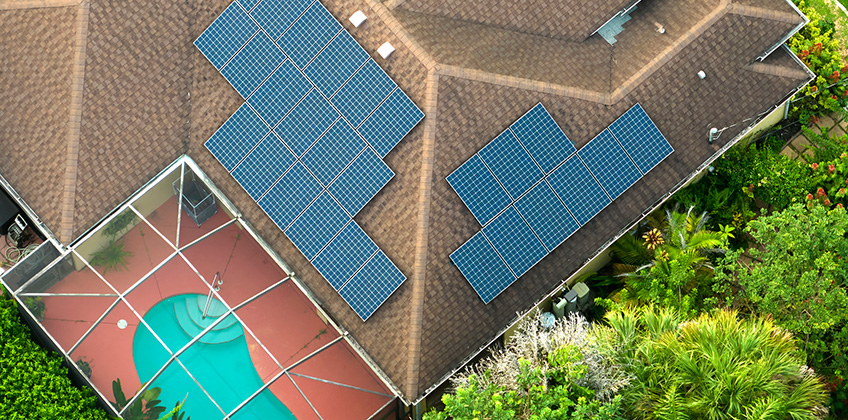
This is the most common type consisting of a polypropylene sheet that absorbs the sun’s energy. This flexible and lightweight material makes it easier for pool owners to mount this type of unit to a roof or ground rack.
Evacuated Tube
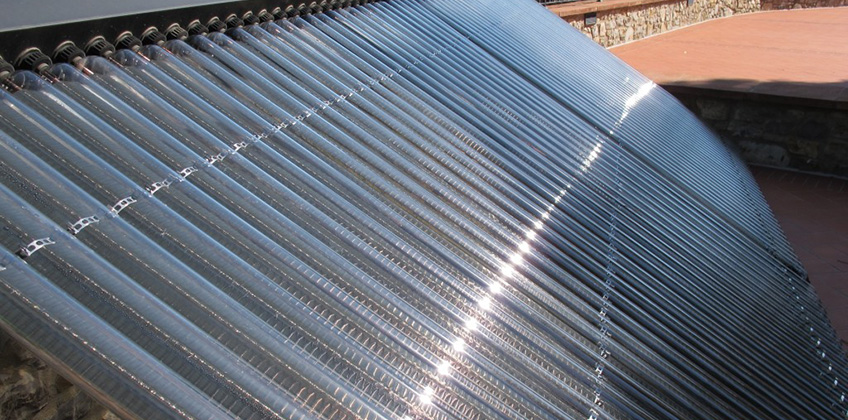
This model consists of parallel rows of glass tubes containing a metal heat pipe. The pipe is attached to a fin that absorbs solar energy, and the fin transfers heat to fluid in a metal tube.
Batch
A batch collector consists of tubes inside an insulated box. Water is heated by the sun as it passes through the pipes before recirculating.
The SunHeater S240U: Our Top-Rated Solar Pool Heater
Solar Pool Heater Pros and Cons
Solar-Powered Pool Heater Pros

Solar pool heaters typically enjoy longer lifespans than other models. In fact, they can last up to 20 years before materials break down due to harsh UV rays and exposure to extreme temperatures and often outlive the roofs they’re built upon. Because they don’t have moving parts, they won’t need much maintenance and hardly ever break down.
Installing a solar-powered pool heater could make you eligible for tax credits. This is a dollar-for-dollar reduction in the amount of income tax you would otherwise have to pay.
For example, if you claim a $1,500 solar tax credit, you reduce your federal income tax by $1,500. The laws around them change frequently, so check state and local laws to see if you can get them before investing money in a solar system.

Solar-Powered Pool Heater Cons

Solar heaters for pools take longer to get pool water up to temperature than gas-powered ones. Even on days when sunlight is constantly streaming down on your pool, these units can only heat your water by a few degrees each day.
Because solar units need lots of sunlight to do the job they were designed for, they’re not suitable for places where it’s always cloudy. If you install them at ground level, you’ll need plenty of space because the panels need to have square footage of 50% of your pool or more.
Solar Pool Heaters FAQs

If you live in a place that enjoys summerlike weather most of the year, a solar-powered warmer is the most economical way to get your pool nice and toasty. While initial costs can be significant, ongoing operational expenses are lower than other pool heaters.
The time it takes to get your pool water up to temperature depends on how warm you want the water to be, how big your pool is, the average outside temperature in your neck of the woods, pool heater type, and whether your pool is above- or in-ground. On average, solar-powered units boost water temperature by 5 to 7 degrees every 24 hours. On cloudy days with only sporadic sun, it might only heat water by 2 to 3 degrees every 24 hours.
Only if you live in a part of the country with balmy weather for most of the year, like California or Florida. Even in these places, temperatures can drop to a bone-chilling 55 degrees or less. Under these conditions, a solar pool heater won’t heat pool water to a temperature most people will feel comfortable swimming in. That’s why some pool owners wanting to enjoy their pools during colder parts of the year use another type of pool heater as a backup.
If you’re using 4’x12′ panels in a warmer part of the country such as southern California, a solar-powered unit typically requires between 6 and 10 panels.
How to Choose a Solar-Powered Pool Heater
Getting a solar-powered pool heater isn’t as simple as finding one that looks like it might do the job. That’s because you’ll need to carefully consider the following factors:
Climate
Climate is among the most significant factors when deciding which solar swimming pool heater is right for you. Let’s say you live where it’s summerlike much of the year. In that case, your heater won’t need to be as big as one for significantly colder meteorological conditions.
Pool Size
Sizing is another crucial factor when deciding which solar-powered pool heater to get. The bigger your pool, the harder the system must work to heat water to a temperature you’ll feel comfortable swimming in. That means you’ll need more panels or larger ones.
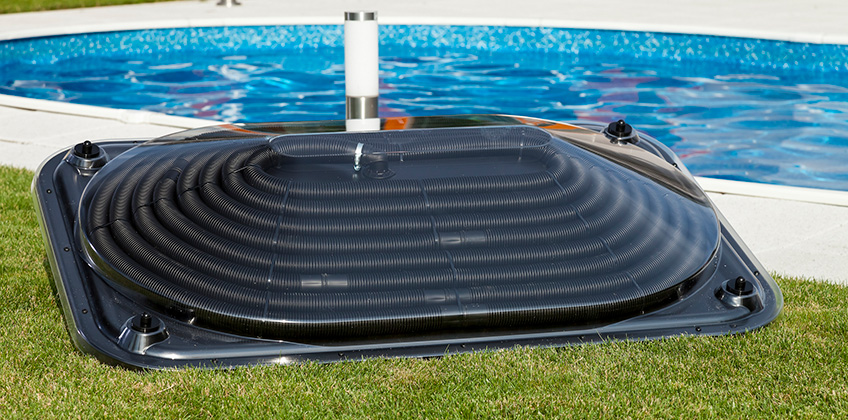
The collectors’ surface area in a solar-powered heater should be between 50% and 100% of your pool’s surface area. If you live where it’s overcast much of the time, you might have to boost this ratio. The good news is that by increasing the square footage, you can also increase the length of swim season.
For example, a 20 by 40-foot in-ground swimming pool in Massachusetts requires collectors with 480 square feet of surface area. That’s because in this state, people use their backyard swimming oases for no more than six months of the year. Therefore, the surface area of your collectors only needs to be approximately 60% of the pool’s square footage.
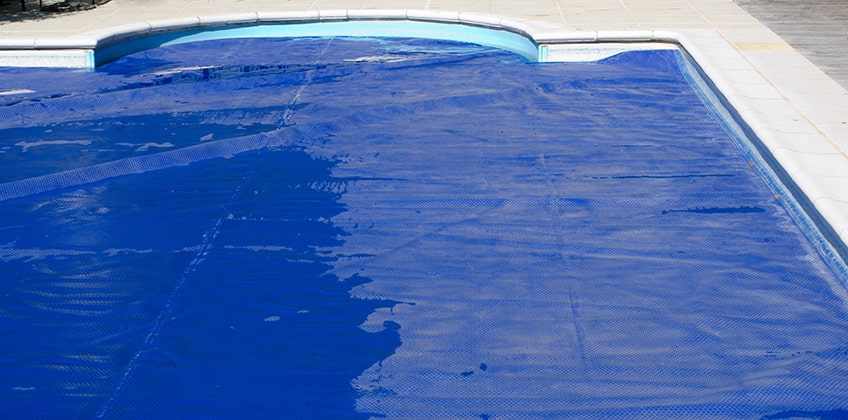
Using a pool cover can trap heat that ordinarily would leak out at night. This can help reduce the size of the solar-powered pool heater you’ll need.
If you’re replacing a traditional pool heater with a solar-powered one, you may have to get a bigger pump. That’s because moving water through collectors takes more power than circulating water in your pool.
Backyard Size
Before plunking down money for a solar-powered unit, ensure you have enough space. If you put collectors on the ground, you’ll need a lot of it. The other option is to put your panels on top of your house. That way, space won’t be as much of an issue since you’re not using your roof for anything else.
Deciding Where to Put Panels
When deciding where to put panels, ensure that backyard objects won’t block sunlight as the sun moves from east to west. You can install panels anywhere where there’s enough sunlight hitting the collectors. Also, you need to find a place where you can orient them in the right direction and position them with the correct tilt toward the sun.

In the northern hemisphere, the optimal orientation is typically true south. This is the direction of the planet’s south pole, as opposed to magnetic south.
If you only take dips in the summer, tilt your collectors at an angle equal to your latitude minus 10 to 15 degrees. If you use your pool all year, the tilt should be the same as your latitude.
Solar Pool Heater Installation and Maintenance
Pool Solar Heater Installation
Installing a solar-powered pool heater isn’t too hard if you’re an experienced DIYer. Here’s what you’ll need to install a solar-powered warmer for an in-ground pool:
- Solar collectors
- Mounts
- Steel bolts
- Power drill
- Straps and clips
- PVC pipes
- Adapters
- Three-way valves
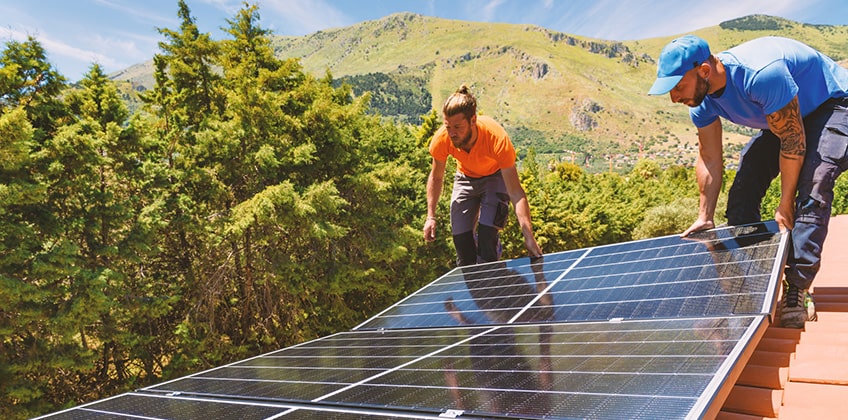
- Step One: Choose Where You Want It to Go
Select a place where the system will get plenty of natural light.
- Step Two: Attach Mounts
If you’re installing the system on your roof, drill holes into the rafters approximately four feet apart. These are for the mounts. Attach mounts with steel bolts.
- Step Three: Fasten Collectors
Attach panels to the mounts securely with clips and straps.
- Step Four: Ensure That Pump and Filter Is Off
Ensure that everything is off so you can safely proceed to the next part.
- Step Five: Connect Collectors to Pipes
Connect the inlet header at the bottom of the collector to a three-way valve using tubes. Connect a tube from the filter to the valve. Connect a tube to the pump from the other end of the filter. If the tube isn’t long enough, use an adapter. Connect the pipe at the end of the outlet header to the valve. Attach the three-way valve pipe to the pool.
- Step Six: Test System
Lastly, fire up the pump, open the valves, and let the pump run for an hour or two. If the water gets warmer, everything is working just fine.
Solar Pool Heater Maintenance

You can keep your solar pool heater running well for up to 20 years by maintaining it. Maintenance primarily consists of keeping pool chemicals balanced and regularly checking the filter, so the system doesn’t get clogged.
You also need to clear debris off collectors so they can operate at maximum efficiency. If glazed collectors are a part of your system, rinse them off regularly if your area doesn’t get much rain.
To winterize your unit, switch it off and drain the pipes before the mercury dips below freezing to prevent damage.
How Much Does a Solar Pool Heater Cost?
Wondering about solar pool heater cost? Well, a solar-powered pool warmer can cost anywhere from $3,000 to $4,000, including buying the unit and installing it. While initial system costs can be greater than other types of pool heaters, ongoing expenses are where these models shine. By investing in one, your only operational expense is the electricity needed to run the pump. Typically, this is around $120 a year.
Solar-Powered Pool Heaters for Above-Ground Pools
An above-ground pool loses warmth faster than an in-ground one. That’s because heat not only escapes from the top, as it does in in-ground pools—it also dissipates on the sides.
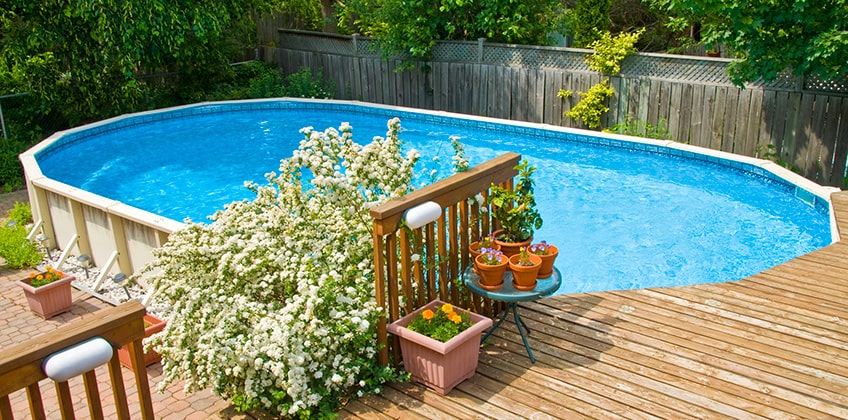
In in-ground pools, the sides are surrounded by dirt (which acts as insulation) so the heat leaves more slowly. Think about insulating your above-ground pool if you’re considering using a solar-powered heater. You can buy insulation specifically made for above-ground pools to minimize heat loss.
By adding insulation, your solar heater for your above-ground pool will be so much more efficient.
Solar Heaters for Inground Pools
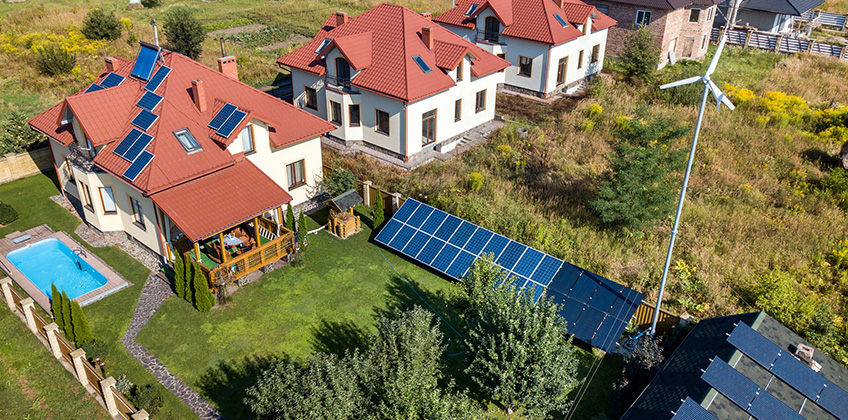
As long as you live in a warm climate and have enough backyard space, you’ll be able to enjoy the benefits of a solar pool heater for your inground pool. These models give you the most bang for your buck because ongoing operational costs are minimal.
They don’t emit greenhouse gases into the atmosphere, so their environmental impact is negligible. And with no parts to break down, maintenance is a breeze.

Pool Maintenance Tips & Tricks
